When it comes to pest control in rental properties, there can sometimes be confusion about who is responsible for what. In this article, we will explore the roles and responsibilities of both landlords and tenants when it comes to dealing with pest issues. From addressing infestations to preventative measures, understanding these responsibilities can help create a harmonious living environment and ensure a pest-free home for everyone involved. So let’s dive in and shed some light on the subject of pest control in rental properties.
Understanding Pest Control in Rental Properties
Pest control in rental properties refers to the management and prevention of pests such as insects, rodents, and other unwanted creatures from infesting the property. It is essential to ensure the health and safety of tenants and maintain the property’s habitability.
Importance of Pest Control in Rental Properties
Effective pest control is crucial for various reasons. Firstly, it helps to prevent the spread of diseases carried by pests, protecting the well-being of tenants and reducing health risks. Additionally, pest infestations can cause property damage, leading to costly repairs. Furthermore, a pest-free environment creates a comfortable and pleasant living space, enhancing tenant satisfaction and reducing tenant turnover.
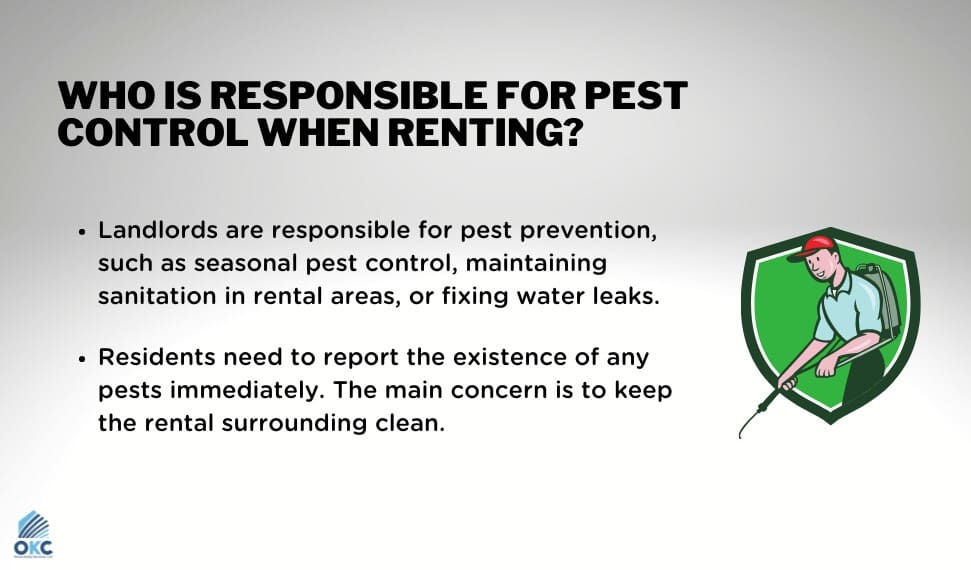
Legal Obligations and Responsibilities of the Landlord
Understanding Landlord’s Legal Obligations
Landlords have legal obligations and responsibilities concerning pest control in rental properties. These obligations may vary depending on local laws and regulations, but generally, landlords are required to provide tenants with a safe and habitable living environment. This includes addressing pest-related issues promptly and effectively.
Providing Habitable Living Conditions
It is the landlord’s responsibility to ensure that the rental property is free from pest infestations when tenants move in. The property should meet certain standards of habitability, which include being free from pest infestations. Landlords should conduct thorough inspections and take necessary measures to prevent pests from entering the property.
Preventing Infestations Through Regular Maintenance
Regular maintenance of the rental property is essential to prevent pest infestations. Landlords should schedule routine inspections to identify any signs of pests and take appropriate action to address them promptly. This can include fixing leaky pipes, sealing cracks and crevices, and ensuring proper ventilation to eliminate conditions that may attract pests.
Responsibility for Initial Pest Control Treatment
In the event of a pest infestation, it is generally the landlord’s responsibility to arrange and cover the costs of the initial pest control treatment. Landlords should hire licensed and experienced pest control professionals to effectively eliminate the infestation and safeguard the tenants’ well-being.
Financial Responsibility for Ongoing Pest Control Services
While the initial treatment is typically the landlord’s responsibility, the financial responsibility for ongoing pest control services may vary. In some cases, the landlord may be responsible for the costs of regular pest control services, while in others, it may be the tenant’s responsibility. It is important to clarify this in the lease agreement to avoid any disputes or misunderstandings.
Tenant’s Responsibilities in Pest Control
Maintaining Cleanliness and Proper Hygiene
Tenants have a vital role in pest control by maintaining cleanliness and proper hygiene within the rental property. Regular cleaning, proper waste disposal, and ensuring that food is stored in airtight containers can greatly reduce the likelihood of attracting pests.
Promptly Reporting Any Signs of Pests
Tenants should promptly report any signs of pests to the landlord or property management. Timely notification allows the landlord to initiate prompt action to prevent the infestation from worsening and spreading to other areas of the property.
Taking Preventive Measures
Tenants can take proactive measures to prevent pest infestations. This includes regularly inspecting their living space for any signs of pests, such as droppings or chewed materials, and taking appropriate action. They can also use pest control products such as sprays or traps, following the manufacturer’s instructions and safety guidelines.
Cooperating with Landlord’s Pest Control Efforts
Tenants should cooperate with the landlord’s pest control efforts by allowing access to their living space for inspections and treatments. Cooperation and communication with the landlord or pest control professionals can contribute to the effectiveness of pest control measures in the rental property.
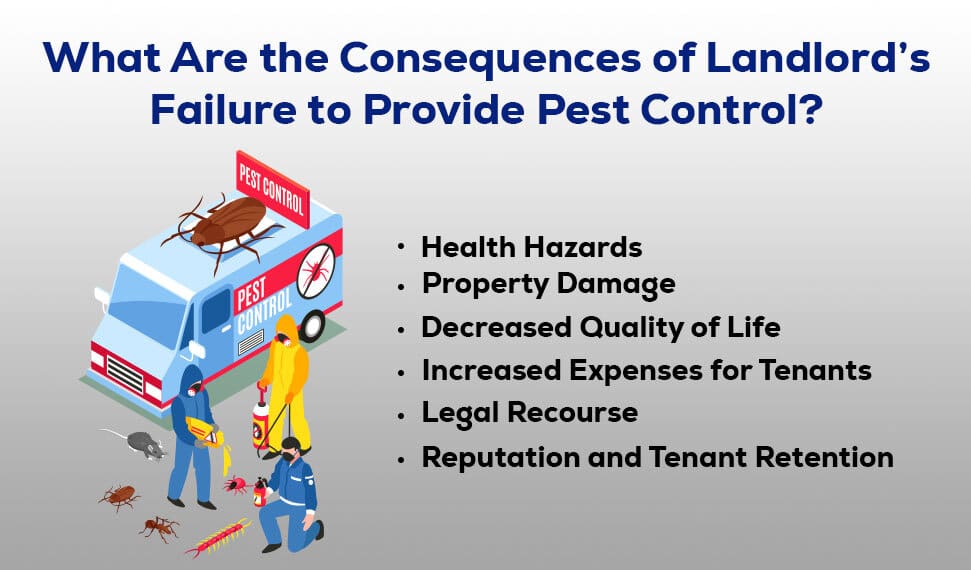
Common Pests in Rental Properties
List of Common Pests in Rental Properties
Rental properties can be susceptible to various pests. Common pests found in rental properties include:
- Cockroaches
- Bed bugs
- Ants
- Mice and rats
- Termites
- Fleas
- Spiders
- Silverfish
Description and Behavior of Each Pest
Understanding the behavior and characteristics of each pest can assist in effective pest control. Let’s take a closer look at a few common pests:
-
Cockroaches: Cockroaches are nocturnal insects that thrive in warm environments. They can contaminate food, spread diseases, and trigger allergies.
-
Bed bugs: Bed bugs are small, reddish-brown insects that feed on human blood. They often hide in mattresses, furniture, or cracks in walls and can cause itchy bites and anxiety.
-
Ants: Ants are social insects that live in colonies. They can infiltrate rental properties in search of food and can be a nuisance, especially when they form trails and invade kitchen areas.
-
Mice and rats: Mice and rats are rodents that can cause extensive property damage by chewing on wires, insulation, and wooden structures. They also carry diseases that pose risks to human health.
Potential Health Risks Associated with Each Pest
Pests can pose significant health risks to tenants in rental properties. Cockroaches can trigger allergies and asthma symptoms in sensitive individuals. Bed bugs can cause itchy bites and sleep disturbances, leading to stress and anxiety. Ants can contaminate food, posing a risk of foodborne illnesses. Furthermore, rodents such as mice and rats can transmit diseases through their urine and droppings. Termites can weaken the structural integrity of the property, leading to safety hazards.
Best Practices for Pest Control in Rental Properties
Regular Inspections and Monitoring
Regular inspections and monitoring are crucial for early detection and prevention of pest infestations. Landlords should conduct routine inspections to identify signs of pests and take immediate action to address any issues.
Proper Waste Management
Proper waste management is essential in preventing pest infestations. Tenants should dispose of garbage in sealed containers and regularly empty them. Landlords should provide appropriate waste receptacles and establish clear guidelines for waste disposal.
Sealing Entry Points and Cracks
Sealing entry points and cracks is an effective way to prevent pests from entering the rental property. Landlords should identify and seal any gaps or openings that pests can use as entry points, such as gaps around pipes, doors, windows, and vents.
Using Safe and Effective Pest Control Methods
When it comes to pest control, it is important to prioritize safety for both tenants and the environment. Landlords should hire licensed pest control professionals who use safe and effective methods to eliminate pests. It is advisable to opt for integrated pest management (IPM) approaches that emphasize prevention and minimize the use of pesticides.
Educating Tenants about Pest Prevention
Educating tenants about pest prevention is essential for maintaining a pest-free environment. Landlords should provide educational materials or conduct workshops to inform tenants about the importance of cleanliness, proper waste management, and the early detection of pest issues. By empowering tenants with knowledge, landlords can foster a collaborative and proactive approach to pest control.
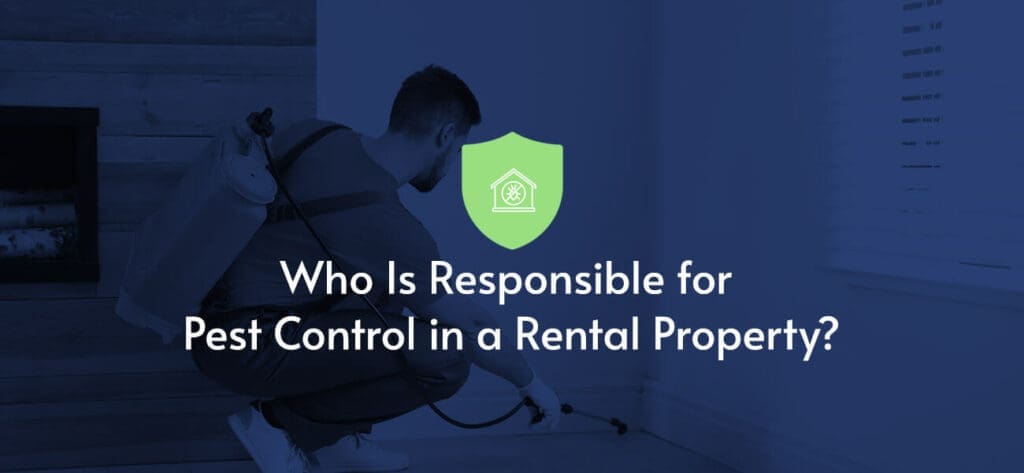
Handling Pest Infestations in Rental Properties
Identifying Signs of a Pest Infestation
It is crucial to be able to identify signs of a pest infestation in rental properties. Some common signs include droppings, gnaw marks, chewed wires or furniture, musty odors, and visible pests or their eggs. Tenants and landlords should be vigilant and report any suspicious signs promptly.
Notifying the Landlord and Documenting the Issue
Tenants should notify the landlord or property management as soon as they suspect a pest infestation. It is important to document the issue, including taking photographs if possible, to provide evidence and facilitate the resolution process.
Coordinating Pest Control Treatment
Upon notification of a pest infestation, the landlord should promptly coordinate pest control treatment. This involves hiring licensed pest control professionals to assess the severity of the infestation and implement appropriate treatment methods. Coordination between the landlord, tenant, and pest control professionals is vital for effective pest control.
Temporary Relocation During Treatment (If Necessary)
In some cases, tenants may need to temporarily relocate during pest control treatment, especially if the infestation is severe or involves hazardous chemicals. Landlords should provide alternative accommodation or make arrangements for tenants to stay elsewhere during the treatment period.
Disputes and Disagreements
Resolving Conflicts Between Landlord and Tenant
Conflicts or disagreements regarding pest control responsibilities may arise between landlords and tenants. To resolve such disputes, it is advisable to engage in open and respectful communication. Both parties should clearly establish their responsibilities and attempt to find a mutually agreeable solution.
Mediation and Legal Options
If conflicts persist, mediation or legal options may be necessary. Mediation involves a neutral third party facilitating discussions between the landlord and tenant to reach a resolution. If mediation fails, tenants or landlords may choose to pursue legal action in accordance with local laws and regulations.
Addressing Responsibilities and Financial Disputes
Clarity regarding pest control responsibilities and financial obligations is crucial in avoiding disputes. Both landlords and tenants should clearly define these responsibilities in the rental agreement. In cases of financial disputes, referring to the terms outlined in the lease agreement can provide guidance on who is responsible for covering pest control costs.
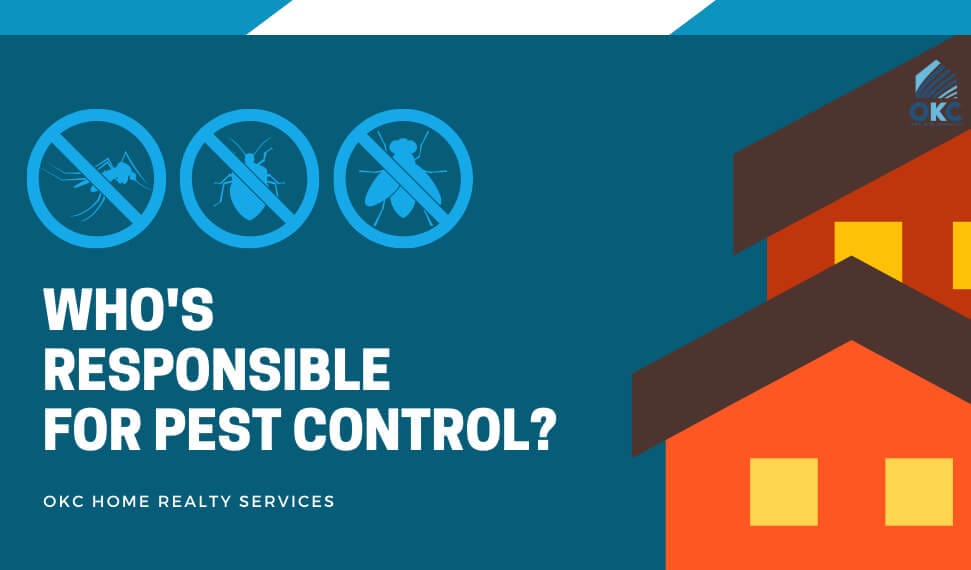
Insurance and Pest Control in Rental Properties
Understanding Insurance Coverage for Pest Control
Insurance coverage for pest control in rental properties may vary depending on the insurance policy and specific circumstances. It is essential for landlords and tenants to review their insurance policies to understand the extent of coverage provided for damage caused by pests and the costs associated with pest control treatments.
Types of Insurance Policies
Landlords typically have landlord insurance policies that cover property damage caused by certain perils, but it is important to check if pests and pest-related damages are included. Tenants, on the other hand, may consider renter’s insurance policies that provide coverage for personal property, including damage caused by pests.
Determining Liability for Damages and Costs
The determination of liability for damages and costs resulting from pests can be influenced by various factors, such as the cause of the infestation and any negligence on the part of the landlord or tenant. Consulting with an insurance professional or legal expert can help clarify these matters and facilitate the resolution of disputes.
Educational Resources for Tenants
Providing Tenants with Educational Materials
Landlords can play a proactive role in educating tenants by providing educational materials related to pest prevention. These materials can include brochures, flyers, or handbooks that outline best practices for maintaining a pest-free living environment.
Online Resources and Guides for Tenants
The internet provides a wealth of online resources and guides that tenants can access for information on pest prevention and control. Landlords can direct tenants to reputable websites, blogs, and forums where they can find valuable insights and tips.
Importance of Tenant Education in Pest Prevention
Tenant education is a key component of effective pest prevention in rental properties. By equipping tenants with knowledge and preventive measures, landlords can empower them to take an active role in maintaining a pest-free environment. Educated tenants are more likely to recognize signs of pests early on and promptly report them, enabling swift action and minimizing the impact of infestations.
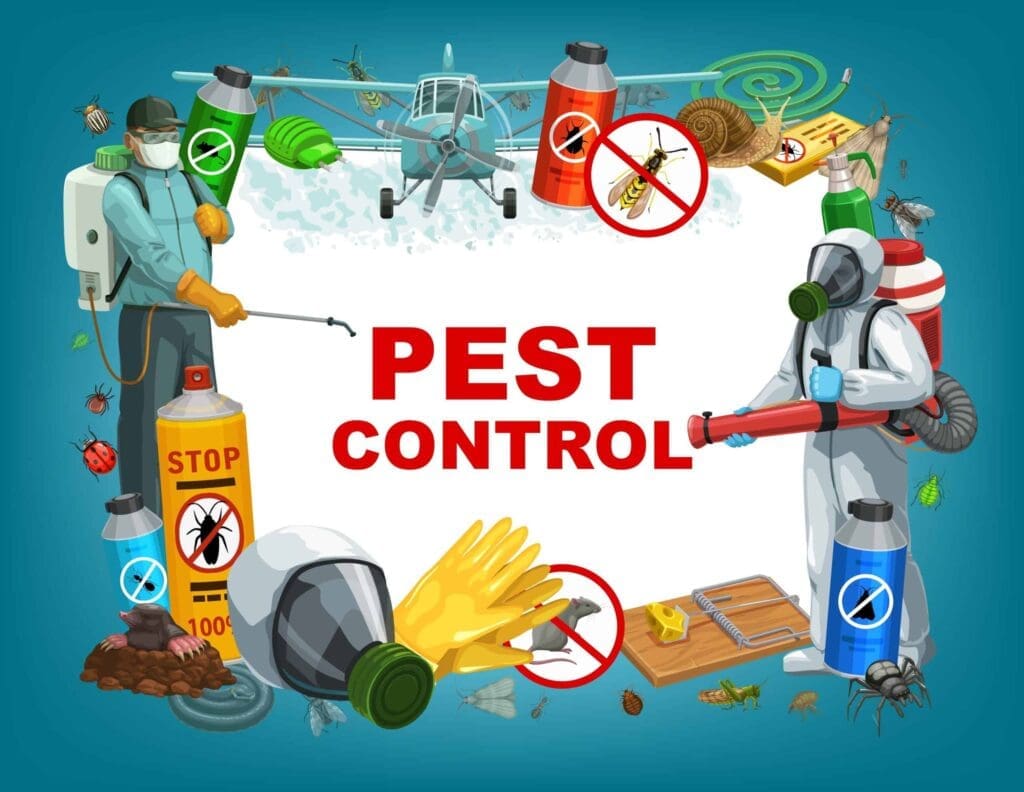
Conclusion
Pest control in rental properties requires collaboration between landlords and tenants to maintain habitable and pest-free living environments. Landlords have legal obligations to provide safe and habitable premises, including addressing pest-related issues. Tenants play a vital role by maintaining cleanliness, promptly reporting signs of pests, and taking preventive measures. By adhering to best practices, such as regular inspections, proper waste management, sealing entry points, and using safe pest control methods, both landlords and tenants can effectively prevent and manage pest infestations. Open communication, timely action, and cooperation between landlords and tenants contribute to a harmonious and pest-free rental property.

I am Randy, the author behind PestControld.com. Drawing from decades of experience, I aim to provide valuable insights, expert advice, and practical recommendations to help you make informed decisions when assessing viable pest control solutions.